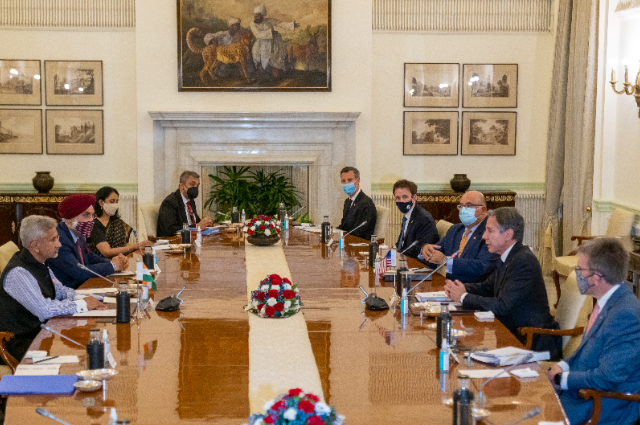India, as the world’s largest democracy, stands at a critical juncture in its political evolution. With a rich history of democratic governance spanning over seven decades, Indian politics continues to undergo significant transformations. From the rise of technology and social media to shifting demographics and global pressures, the future of Indian politics is marked by both opportunities and challenges.
1. Evolving Political Landscape
India’s political landscape has evolved significantly since its independence in 1947. While the initial years were dominated by the Congress party under the leadership of Jawaharlal Nehru, the rise of regional parties in subsequent decades has fragmented political power. This trend is likely to persist, with coalition governments becoming increasingly common. These alliances may foster inclusivity but could also lead to instability due to differing agendas among coalition partners.
Moreover, the decline of ideological politics and the rise of personality-driven campaigns have altered the dynamics of political engagement. Leaders with strong public appeal often eclipse party ideologies, reshaping how political power is sought and maintained.
2. Role of Technology in Shaping Politics
The rapid rise of technology is perhaps one of the most defining factors shaping the future of Indian politics. Social media platforms like Twitter, Facebook, and WhatsApp have transformed the way political parties communicate with voters. Political campaigns are now data-driven, leveraging analytics to craft targeted messages.
Artificial intelligence and machine learning are increasingly being used to predict voter behavior and design personalized campaign strategies. However, the misuse of such technology, including the spread of fake news and propaganda, poses serious concerns. Striking a balance between leveraging technology and ensuring ethical practices will be vital for the future of Indian politics.
3. Increasing Voter Awareness and Participation
India’s demographic dividend is another factor that will influence its political future. With a growing population of young voters, the demand for transparency, accountability, and good governance is likely to intensify. Social movements led by youth groups and student organizations have already demonstrated the power of collective action, highlighting issues such as unemployment, education, and climate change.
The rising literacy rates and digital penetration are empowering citizens with access to information, enabling them to make informed decisions. This shift could lead to a reduction in traditional vote-bank politics based on caste and religion, ushering in a more issue-based political culture.
4. Women in Politics
The participation of women in Indian politics is gradually increasing, but significant gaps remain. Greater representation of women in political leadership roles is crucial for inclusive development. Encouraging women’s participation through policy measures like reservation in legislatures could bring fresh perspectives and priorities to governance.
5. Challenges to Democratic Institutions
The future of Indian politics is also shaped by challenges to its democratic institutions. Allegations of erosion of judicial independence, misuse of investigative agencies, and curtailment of free press are troubling signs for India’s democracy. Restoring public trust in these institutions will require political will, judicial reform, and active civil society engagement.
6. Environmental and Developmental Balancing Act
The politics of development versus environmental sustainability will be a critical issue for future governments. With growing environmental concerns, political decisions will need to balance industrialization with ecological preservation. This is particularly important given the rising awareness among younger voters about climate change and the need for sustainable growth.
7. Foreign Policy and Geopolitical Dynamics
India’s foreign policy decisions will continue to play a significant role in its domestic politics. The geopolitical competition with China, turbulent relations with Pakistan, and engagement with global powers like the United States will impact political narratives. Domestic debates on defense spending, trade policies, and international alignments will influence electoral outcomes.
8. The Challenge of Corruption and Accountability
Despite technological advancements, corruption remains a significant challenge in Indian politics. Efforts like the introduction of GST, digital payment systems, and the Real Estate Regulatory Authority (RERA) have improved transparency, but more needs to be done. Strengthening anti-corruption frameworks, such as the Lokpal, and ensuring better enforcement of laws are imperative to building trust in the political system.
9. Rise of Regional and Identity Politics
Regional parties have consistently gained prominence, addressing localized concerns and representing diverse cultures. However, this rise has also heightened identity-based politics, leading to polarization along lines of caste, religion, and ethnicity. Bridging these divides while maintaining a federal structure will be crucial for the nation’s unity and progress.
10. Vision for the Future
The future of Indian politics lies in embracing its diversity while fostering inclusivity, accountability, and sustainability. Political parties will need to transition from populist measures to long-term policy planning. An informed electorate, driven by issues rather than identities, will be the cornerstone of India’s democratic maturity.
Furthermore, empowering grassroots leadership, promoting gender equality, and safeguarding democratic institutions will ensure that the foundation of Indian democracy remains strong. As India moves forward, the challenge will be to harness its vast potential while addressing the deep-rooted socio-economic inequalities.
Conclusion
The future of Indian politics is both promising and challenging. The ability of leaders to navigate these complexities while staying true to democratic values will determine the course of the nation. By fostering a more informed, participative, and accountable political culture, India can truly emerge as a global leader in the 21st century.

